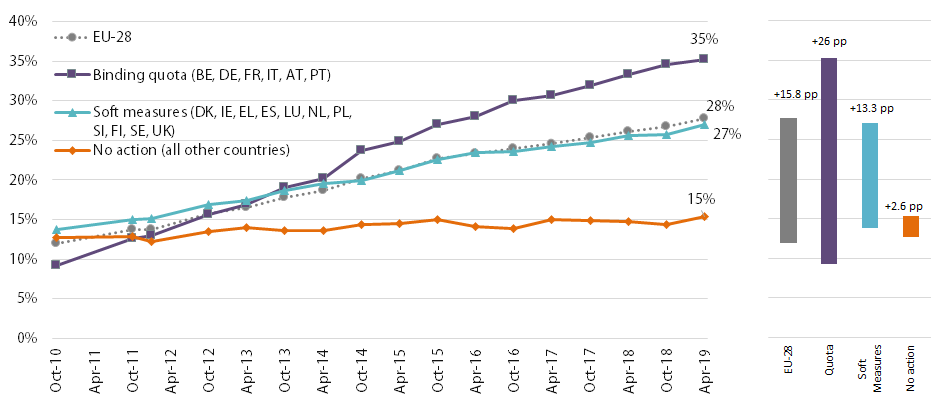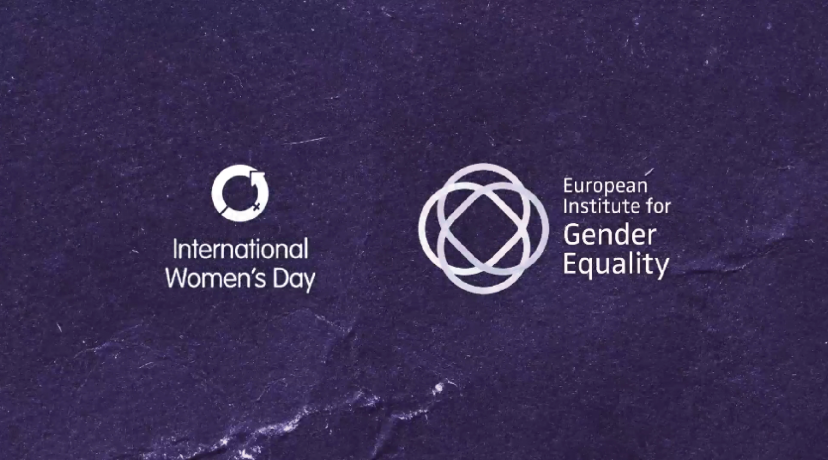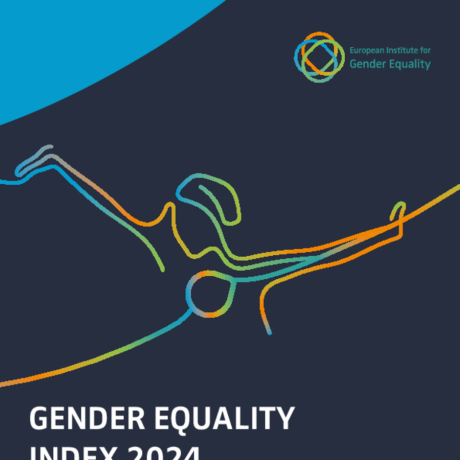
Over the last nine years, the proportion of women on the boards of the largest listed companies across the EU has more than doubled: from 12 % in October 2010, to 28 % in April 2019. The countries that introduced legislative quotas were driving the progress, but soft measures have also worked in some countries. However, gender balance has not made significant improvements in the countries that have not taken any action.
In 2010, the European Commission suggested legislative action and two years later proposed a Directive with a target to reach 40 % women on boards. Despite the fact that no agreement was reached on the proposal of a Directive, several EU Member States took proactive measures to improve gender-balance in economic decision-making.
- In April 2019, the boards of largest listed companies across the 28 EU Member States had 28 % women and 72 % men. The proportion of women has increased by 1 percentage point (pp) in the last 6 months.
- France remains the only Member State with at least 40 % of each gender on the combined boards of the companies covered; a figure first reached in October 2016 following the adoption of a 40 % quota in 2011. This quota is applicable to companies with more than 500 employees or revenues over € 50 million.
- Women account for at least a third of board members in Sweden, Italy, Finland, Belgium and Germany. In Cyprus, Greece, Malta and Estonia women make up 10% or less of board members.
- The difference between action and inaction is striking. The six countries with binding quotas currently have 35 % women on boards (aggregate of all companies covered in those countries) and this proportion has gone up by 26 pp since October 2010.
- Countries using soft measures have 27 % women on boards, up by 13 pp over the period. In stark contrast, no-action Member States have just 15 % women on boards and the level of female representation has only increased by less than 3 pp since October 2010.
- Progress at board level is not replicated at the executive level. In April 2019, women accounted for just 18 % of senior executives compared to 30 % of non-executives. To some extent this reflects the fact that quotas tend to apply only to supervisory boards, which are composed primarily of non-executives. This highlights the need for gender equality policies within companies.
Figure: change in the share of women on boards of the largest listed companies October 2010- April 2019 by type of action taken.

Source: EIGE Gender Statistics Database – largest listed companies.
Legislative gender quota targets: FR (40%), BE, IT & PT (33%), DE & AT (30%). “Soft measures” includes Member States with legislative quotas that are restricted to state-owned companies or applied without sanctions.
Further information
Since 2017, EIGE collects and produces harmonised and comparable gender statistics in the area of women and men in decision-making (politics; public administration; judiciary; business and finance; social partners and NGOs; environment and climate change; media; education, science and research; and sports).
EIGE’s Gender Statistics Database provides statistical evidence that can support and complement the European Commission’s Strategic Engagement for Gender Equality 2016 - 2019 and support the Member States to monitor their progress.
All data can be found in Gender Statistics Database: Women and men in decision-making
The latest on data largest listed companies were published in May 2019.


